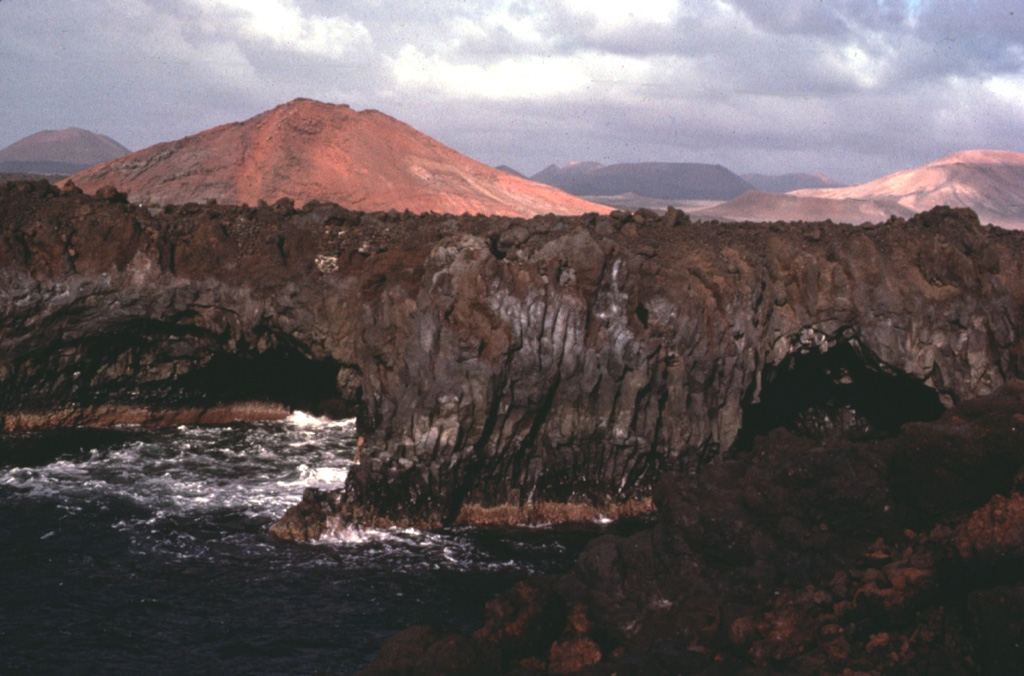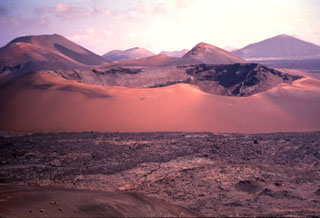Image GVP-06156

The 60-km-long island of Lanzarote at the NE end of the Canary Islands contains the largest concentration of youthful volcanism in the Canaries. Cinder cones and lava flows erupted along NE-SW-trending fissures in the Pleistocene and Holocene are found throughout the low-altitude arid island. The largest historical eruption of the Canary Islands took place during 1730-36, when long-term fissure-fed eruptions formed the Montañas del Fuego group of cinder cones and produced voluminous lava flows that covered about 200 km2.
Copyrighted photo by Katia and Maurice Krafft, 1977.
Copyrighted image used with permission. All Rights Reserved. Contact photographer for any usage requests.

Lanzarote
